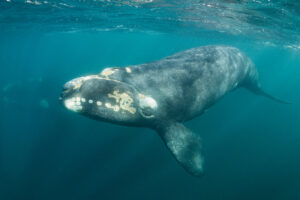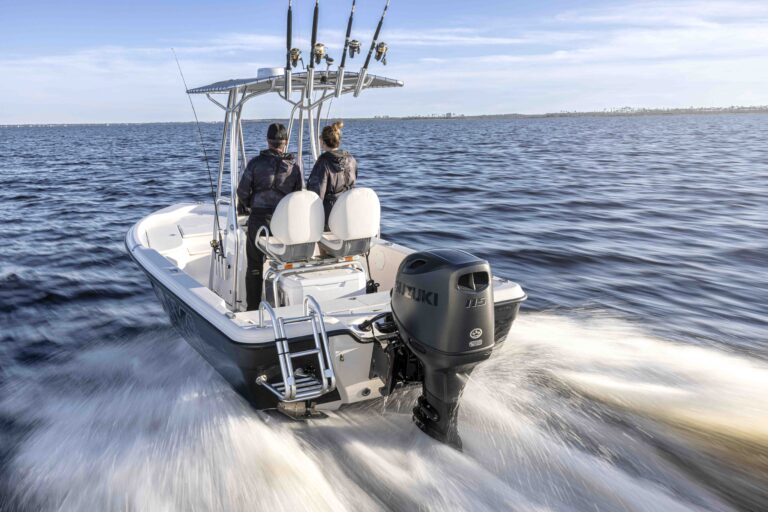
An outboard shortage, soaring orders for new boats and a lack of skilled labor have builders scrambling to produce enough boats to meet demand — with dealers facing long lead times, being bumped from production slots and getting stuck with warranty work on new boats when they do arrive.
“I think you’ll find that manufacturers have a backlog. They’re behind schedule, and that makes it very challenging,” says Randy Sweers, managing partner at FB Marine Group, with locations in Fort Lauderdale and Pompano Beach in Florida. “If you give the customer a tentative delivery date and you’re off by 60 days, or 180 days in some cases, it becomes very difficult to keep them happy.”
Boatbuilders are manufacturing to capacity in many cases but can’t hire the workers necessary to increase production. “We are seeing some quality issues because they’re obviously trying to build as many boats as fast as they can,” Sweers says. “Some manufacturers don’t pay the dealers a very good rate to fix their screw-ups, for lack of a better term. But if we want to keep the customer happy, we have to do it.”
Ninety-five percent of dealers responding to a poll conducted by Soundings Trade Only, Baird Research and the Marine Retailers Association of the Americas say they waited at least a month to get new-boat orders filled in August, and 35 percent say they experienced lead times of more than three months.
Nearly half of all dealers responding to a SunTrust poll in October say they had long lead times from key vendors — an improvement compared with 65 percent in May. “While it appears that boat manufacturers have caught up to some extent, outboard engine supply remains limited, as the major manufacturers prioritize higher-volume boat OEMs over smaller players and aftermarket and repower demand,” analyst Michael Swartz writes.
That’s true for Clark Marine in Maine, which orders a couple of brands with loose engines rather than having them prepackaged, says owner and general manager Rob Brown. “We had a few decent-money boats that we had orders on, and we couldn’t get the engines for them,” Brown says. “We scrambled and were able to salvage a couple of those sales. One of them we lost simply because we couldn’t get the motors.”
The engines he’d ordered in mid-February were guaranteed to arrive the first week of May but didn’t show up until August, Brown says. “I think it gives the entire industry a black eye because, looking at it from the customer’s standpoint, who do they believe and who do they not believe?” he says.
Supply shortages are causing headaches for manufacturers, as well. “We are taking Whalers off the line to wait for motors,” says Boston Whaler East Coast business manager Doug Nettles. “We pull them off the line and have to find a place to put them while we wait. They’re retail sold, and we aren’t able to offer them to customers.”
Last year, Anchor Boats in Maryland had two Scout deals delayed because the company couldn’t get upholstery, says Anchor co-owner Matt Trainer. Scout is discussing bringing that part of the operation in-house. “It causes big hassles for manufacturers because then they’ve got to stop the whole production line and find a spot for the boat,” Trainer says.
Trainer had some boats arrive without props, but he stocks the ones used on his most popular models. When those boats came in, he added the props out of his stock and replaced them when the new props came.
Oyster Harbor Marine, with locations throughout New England, had a few models delivered last summer that had mismatched engines and hulls, says sales coordinator Matt Thompson. The dealership hasn’t seen that problem since.
Quality Boats of Tampa Bay, Fla., has plenty of inventory, says marketing director Lauryn Howell, but lead times for some of its highest-grossing models, such as the Pursuit S 408 Sport and Grady-White Canyon 456 center console, can be a year. “If you’re spending that kind of money, you’re going to wait for it,” Howell says.
Anchor Boats has carried one brand for only a year and, consequently, sometimes will lose a production slot for a boat that was ordered. “Sometimes they won’t hold to an agreed-upon date,” Trainer says. “I keep on the manufacturer — I’ll call the person in the sales department who does the scheduling and remind them it’s a sold boat.”
Consolidation among dealerships also has presented a challenge because when a major line becomes available, it goes to large chains that can shuffle inventory among locations, Sweers says. “We get approached by customers whose local dealer has no inventory, and we’ll have what they’re looking for,” he says. “You’re dealing with people out of your territory, so technically you can’t sell the boat to them, and they get frustrated with the brand.”
Clark Marine gets people walking through its doors who had committed to buy boats from other dealers but gave up and resumed their search. “I’m sure most dealers had that kind of experience at one point or another because of the shortage of product this summer,” Brown says. “If a due date comes and goes, they lose their confidence, so they come to me already frustrated. Hopefully those things are behind us.”
The problem is improving, dealers say, but they are still telling customers to make decisions in fall rather than spring. “I tell them, ‘You can buy something in stock, or I have spring slots available with boats I’m building for stock that I could put your specs into, but here’s the deal: Whether you buy a boat from me or some other dealer, don’t go in March and expect to get something in May,” Trainer says.
Though customers can be skeptical, Strong’s Marine in New York takes time to educate them. Owner Jeff Strong shares a list of boats the dealership has already sold, along with how long it took to deliver them. “We then encourage them to communicate with the manufacturer,” Strong says. “Usually if you do that, people realize it’s not a sales gimmick — this is real.”
This article originally appeared in the December 2018 issue.











